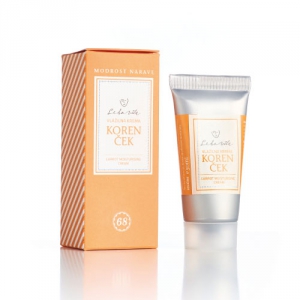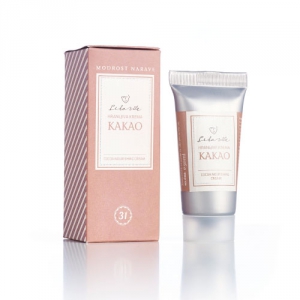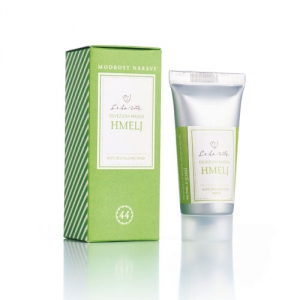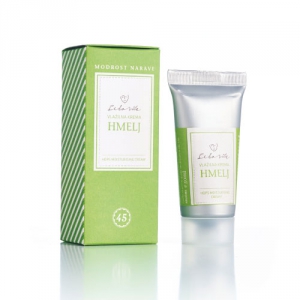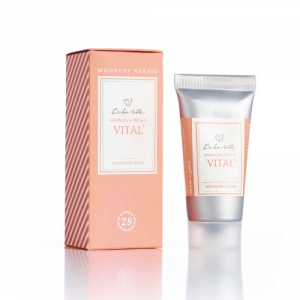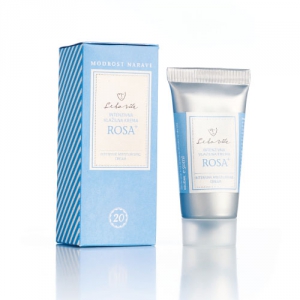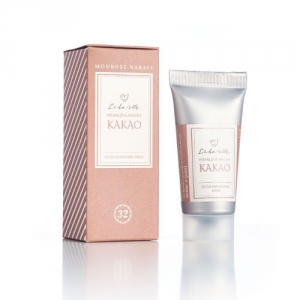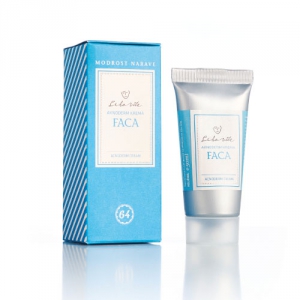Cultivating different types of skin
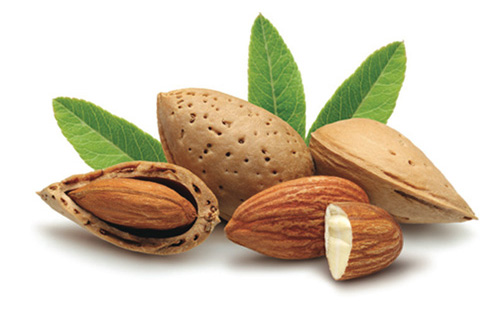
Beautiful skin is not just a symbol of beauty, but also reflects the holistic health of our body and mind. The sun, smoking, stress, illness, medication and aging eventually change the structure of the skin, it loses elasticity, moisture and shine, charming wrinkles are inevitable. When selecting care cosmetics, we consider skin type, season and lifestyle habits.
Dry skin
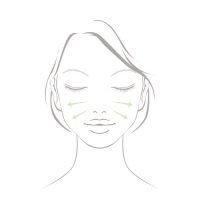
In the youth, dry skin is an image of beauty. Cheeks are like ripe peaches, without oily shine and blackheads, and pores are narrow. But already in the late twenties, without adequate care of the lack of water and / or fat it is seen as tight and irritated skin, prone to the occurrence of lichens and early wrinkles around the eyes and mouth. Skin lacks natural protection in the form of intercellular natural skin fat, as shown by the lack of humidity. Horn cells become dry and crumbly, their interconnection worsens and moisture quickly evaporates, and harmful substances more easily penetrate into the interior. Dry skin becomes sensitive to diseases and ages faster, and quickly becomes reddish in the sun, cold and wind. Not even the best care can force tired cells to produce more fat, but you can replace to skin what it lacks - fat and water.
Dry skin care
Dry skin is very delicate and requires daily care, both in the morning and evening. We treat by the principle of better less but the best. Younger skin in addition to moisturizing fats needs mainly water, and dry mature skin both nutritious as well as moisturizing fats and water. Particular care should be taken when choosing a day cream in the case of everyday use of powder on your face. If the application of powder creates a sense of tightness, the basis is chosen with more fat cream or powder on a creamy base; liquid powder is more suitable for oily and normal skin.
Sensitive skin
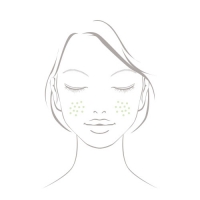
Type of sensitive skin is usually innate in particularly light-skinned people and those with light or red hair and blue or green eyes. Their skin produces very little fat and has a very thin horny layer with little protective pigment. Therefore, it is more vulnerable to external stimuli and internal stress. Sensitive skin is always dry, any dry skin is not necessarily sensitive. Such can become under an influence of environmental pollution, improper care and mental and physical stress. Recognizable signs of sensitive skin are: irritation, redness, feeling that pulls the skin, flaking and itching.
Type of sensitive skin is usually innate in particularly light-skinned people and those with light or red hair and blue or green eyes. Their skin produces very little fat and has a very thin horny layer with little protective pigment. Therefore, it is more vulnerable to external stimuli and internal stress. Sensitive skin is always dry, any dry skin is not necessarily sensitive. Such can become under an influence of environmental pollution, improper care and mental and physical stress. Recognizable signs of sensitive skin are: irritation, redness, feeling that pulls the skin, flaking and itching.
Sensitive skin care
In the case of heavy sweating in the sauna and sports valuable protective substances secrete from the skin, which are difficult to replace by the skin. We can help the skin by applying a thick layer of greasy moisturizing cream or nourishing moisturizing mask. Likewise, drinking alcohol, smoking, excessive sunbathing, chlorinated water in swimming pools, central heating and air conditioning are drying up the skin. People with dry skin should avoid cosmetics containing alcohol. Masks on the face should not solidify, because dry skin does not require peeling. Under the mask, we recommend applying a nourishing moisturizing blend of oils. Sensitive dry skin is cared for by products of simple composition based on oil, extracts of calendula and chamomile, and contents of dexpanthenol.
Mixed skin
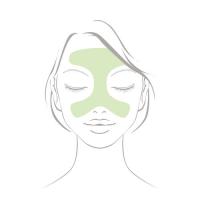
An explicitly mixed skin type is only encountered among young people. The middle part of the face, for example, is very oily and sprinkled with acnes, but they have soft and dry cheeks. However, it is the wisdom of nature - on the exposed parts of the face there is more sebaceous glands, and more fat provides better protection. Parts of oily skin are T-shaped, on the forehead, nose and chin. Elsewhere on the face and neck the skin is usually dry, even flaky. When the difference between oily and dry areas is very high, it is difficult to choose a suitable care product. But eventually a physiological balance between fat and moisture in the skin is established and over the years the mixed skin is gradually normalized.
An explicitly mixed skin type is only encountered among young people. The middle part of the face, for example, is very oily and sprinkled with acnes, but they have soft and dry cheeks. However, it is the wisdom of nature - on the exposed parts of the face there is more sebaceous glands, and more fat provides better protection.Parts of oily skin are T-shaped, on the forehead, nose and chin. Elsewhere on the face and neck the skin is usually dry, even flaky. When the difference between oily and dry areas is very high, it is difficult to choose a suitable care product. But eventually a physiological balance between fat and moisture in the skin is established and over the years the mixed skin is gradually normalized.
Mixed skin care
Care for mixed skin is like care for two different types of skin. In the morning a hydrating cream is applied on cleansed face, and in the evening hydrogel. In the areas of the face where the skin is dry, apply greater quantities of cream, and less to oily parts of the face. If the nose, forehead and chin grease fast, cream should not be applied to them, especially not overnight. And if dry areas are too bound, apply further greasing with cream. Similarly, we care for seborrheic skin, which is not dry not fat, but feels rough and covered with blackheads and acnes. After cleaning by tonic, we apply greater quantities of hydrogel.
Oily skin
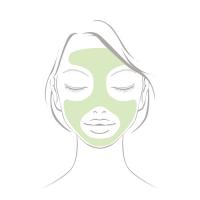
During adolescence the amount of hormones in the blood is growing rapidly and encourages the sebaceous glands to accelerate the secretion of skin fat. Should from this be developed an oily skin type, it is shown later when sex hormones are balanced. Oily skin has certain advantages – it is mainly insensitive and stays young longer. Fat makes a protective layer, which prevents drying out, at the same time it prevents harmful substances to penetrate into the skin. As oily as skin is at a young age, luckily, it will not be all of life. In the early thirties it is often changed to a mixed skin type.
During adolescence the amount of hormones in the blood is growing rapidly and encourages the sebaceous glands to accelerate the secretion of skin fat. Should from this be developed an oily skin type, it is shown later when sex hormones are balanced. Oily skin has certain advantages – it is mainly insensitive and stays young longer. Fat makes a protective layer, which prevents drying out, at the same time it prevents harmful substances to penetrate into the skin. As oily as skin is at a young age, luckily, it will not be all of life. In the early thirties it is often changed to a mixed skin type.
Oily skin care
To clean oily skin use cosmetic soap or tonic, which contain a lower dose of alcohol. On clean skin, you should apply a thin layer of moisturizer for oily skin. Once or twice a week, we recommend peeling in the morning, after which we must apply hydrating cream for oily skin on the face.
Acne-prone skin
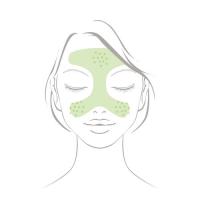
From 80 to 100% of adolescents have problematic and acne-prone skin. Researches have shown that acne is caused by accumulating of horn cells, bacteria and fat in the sebaceous follicles of hair, especially on the face, chest and upper chest, and back. The occurrence of acne is most affected by hormonal changes, but also other causes, for example heredity. The situation can be repeated, and first appears in any stage of life. More and more adult women have problematic skin, which may be associated with the menstrual cycle, taking birth control pills, hormonal changes in age and stress. Even the secretion of adrenaline affects the skin.
From 80 to 100% of adolescents have problematic and acne-prone skin. Researches have shown that acne is caused by accumulating of horn cells, bacteria and fat in the sebaceous follicles of hair, especially on the face, chest and upper chest, and back. The occurrence of acne is most affected by hormonal changes, but also other causes, for example heredity. The situation can be repeated, and first appears in any stage of life. More and more adult women have problematic skin, which may be associated with the menstrual cycle, taking birth control pills, hormonal changes in age and stress. Even the secretion of adrenaline affects the skin.
Acne-prone skin care
For treating acne-prone skin, it applies similarly as for the care of oily skin. We should not exaggerate with cleaning to avoid damaging the protective layer of the skin and thus further accelerate the formation of pimples. It is suitable to use products that do not destroy the protective layer of the skin pH. For daily care use hydrating cream or hydrogel with a mild antiseptic effect on the skin. During a sunbathing, apply a protective cream with a strong hydrating or gel base. After a swim in the pool or sea, prior to the application of protective cream thoroughly wash your face with plain water.

